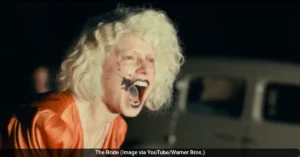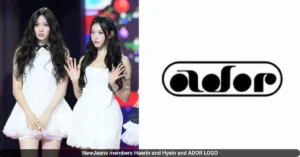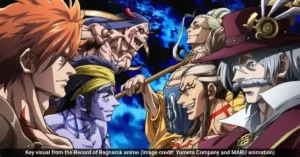Guillermo del Toro’s new Frankenstein movie on Netflix brings a fresh perspective to Mary Shelley’s classic story, but his vision reaches beyond the 1818 novel. The director looked to the haunting 1973 Spanish film The Spirit of the Beehive for creative inspiration, blending its atmospheric influence with Shelley’s original themes to create a unique adaptation.
The connection reveals how a Spanish-language film about a child’s encounter with Frankenstein’s monster helped shape del Toro’s approach to his own long-awaited project. This inspiration adds a layer of artistic depth to a story that has captivated audiences for over two centuries.
The Core Inspiration Behind the Film
Guillermo del Toro has publicly acknowledged that The Spirit of the Beehive served as a key inspiration for his adaptation of Frankenstein. He told Entertainment Weekly that the film made a deep impression on him, stating:
“I nevertheless must admit that Spirit of the Beehive is one of those seminal movies that seeped into my very soul”
The Spanish classic, directed by Victor Erice, tells the story of a young child living in a remote Spanish village who becomes traumatized after seeing James Whale’s 1931 film adaptation of Frankenstein and develops a fascination with the monster. This theme of childhood trauma and how it shapes one’s perception of monsters resonated deeply with del Toro.
The director also mentioned other influences including Night of the Hunter, Whale’s Frankenstein, and Bunuel’s Los Olvidados. This combination of inspirations helps explain the distinct visual and emotional tone of del Toro’s Frankenstein, which focuses more on character development and emotional weight than traditional horror elements.
Connecting Spanish Cinema to Shelley’s Classic
The creative bridge between The Spirit of the Beehive and Frankenstein creates an interesting artistic loop. Erice’s film features a child protagonist named Ana who is profoundly affected by watching the 1931 Frankenstein movie. Del Toro then drew from Erice’s interpretation to inform his own approach to Mary Shelley’s original novel.
This influence is particularly evident in how del Toro’s film portrays the Creature. Rather than presenting a purely monstrous figure, his version shows a being who feels genuine emotion and even remorse, similar to how the monster is perceived through the child’s eyes in The Spirit of the Beehive.
Del Toro had previously drawn inspiration from the same Spanish classic for his 2006 film Pan’s Labyrinth, whose protagonist was based on Ana Torrent’s character in The Spirit of the Beehive. This recurring influence highlights the lasting impact the Spanish film has had on del Toro’s approach to storytelling, particularly his signature style of blending dark fantasy with emotional depth.
Del Toro’s Long Journey with Frankenstein
Guillermo del Toro’s connection to Mary Shelley’s Frankenstein spans decades. He has often referred to the novel as his “Bible” and mentioned that he’s been working toward making this adaptation for thirty years. In various interviews, he expressed that Frankenstein is the project he “would kill to make,” describing his ideal version as a “Miltonian tragedy.”
The film represents the culmination of a lifelong passion for the director, who has consistently shown affinity for monster stories throughout his career. From Cronos to The Shape of Water, del Toro’s filmography demonstrates his unique ability to find humanity in monstrous characters, making Frankenstein a natural fit for his artistic sensibilities.
Del Toro’s adaptation stars Oscar Isaac as Victor Frankenstein and Jacob Elordi as the Creature, with Mia Goth playing dual roles as Victor’s mother and Elizabeth. The casting reflects del Toro’s careful approach to the material, selecting actors capable of conveying the complex emotional layers he wanted to bring to Shelley’s classic tale.
A Modern Take on Classic Themes
While honoring its literary and cinematic influences, del Toro’s Frankenstein also introduces contemporary relevance to Shelley’s story. The film is set in the mid-19th century during the Crimean War, highlighting themes of war profiteering and social inequality that resonate with modern audiences.
The director explained his approach to adapting the classic text: “When she wrote Frankenstein, it was not a period piece. It was a modern book, so I didn’t want you to see a pastel-colored period piece.” This perspective allowed him to capture the same anxiety and contemporary relevance that Shelley infused in her original work.
Del Toro’s version focuses heavily on the relationship between creator and creation, exploring themes of parental responsibility and the cycle of abuse. The film presents Victor Frankenstein not as a noble scientist gone wrong, but as a product of his own traumatic upbringing who perpetuates that trauma onto his creation.
The Creature in del Toro’s film is one of the most human-like interpretations ever put to screen. Rather than a killing machine, he is portrayed as an intelligent being capable of language, learning, and emotional connection. This approach aligns with both Shelley’s original articulate creature and the more sympathetic monster portrayal that del Toro admired in The Spirit of the Beehive.
Also Read: Sabrina Carpenter to Lead New Alice in Wonderland Musical Film
Also Read: The Fiery Finale of ‘Die My Love’ Explained













